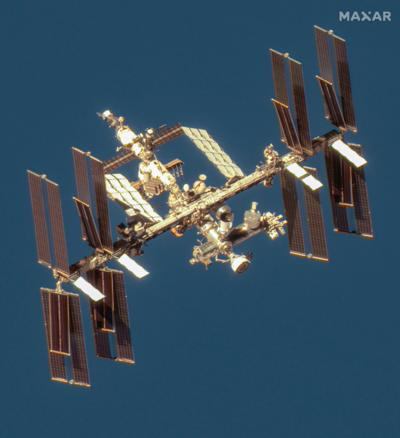Sat, Jun 29, 2024
Wants Space Agency to Pay for Damage
A homeowner in Naples, Florida, is suing NASA to have them pay for damages his house sustained when a piece of debris from the International Space Station (ISS) did not burn up in the atmosphere as it was planned to do.

A chunk of melted and partially disintegrated metal went through the roof and penetrated two floors below, according to Mica Nguyen Worthy, the attorney for homeowner Alejandro Otero and his family. Mr. Otero said the object nearly hit his son.
NASA examined the 1.6-pound cylindrical object and confirmed that it had in fact come from the ISS. The agency said it was a stanchion from the supporting structure that attached old nickel hydride batteries to a pallet. The entire load weighing 5,800 pounds was discarded from the space station in 2021 and was expected to burn up in the atmosphere, according to engineers. The load’s orbit gradually decayed and it finally entered the atmosphere earlier this year, but the piece that struck Otero’s house had somehow survived the intense heat of its plunge from space.
Ms. Worthy said, “Space debris is a real and serious issue because of the increase in space traffic in recent years. My clients are seeking adequate compensation to account for the stress and impact that this event had on their lives. They are grateful that no one sustained physical injuries from this incident, but a ‘near miss’ situation such as this could have been catastrophic. If the debris had hit a few feet in another direction, there could have been serious injury or a fatality.”

The International Space Station jettisons waste and spent materials from time to time and it is planned to burn up and disintegrate upon reentering the Earth’s atmosphere. Larger objects like spent booster rockets or other components of spacecraft or satellites at the end of their lifetimes will drift in orbit, sometimes for years and most of those also burn up when their orbits eventually decay and they burn up in the atmosphere. Occasionally, parts of the largest objects do survive the plunge, only to splash down in water or impact land in sparsely inhabited areas.
More News
Homing [ICAO] The procedure of using the direction-finding equipment of one radio station with the emission of another radio station, where at least one of the stations is mobile, >[...]
Aero Linx: European Regions Airline Association (ERA) The European Regions Airline Association (ERA) represents a diverse membership of over 50 airlines and more than 150 associate>[...]
A Few Questions AND Answers To Help You Get MORE Out of ANN! 1) I forgot my password. How do I find it? 1) Easy... click here and give us your e-mail address--we'll send it to you >[...]
While On Short Final, About 300 Ft, The Pilot Performed A Forced Landing Near Trees On September 7, 2025, about 0932 eastern daylight time, a CubCrafters Carbon Cub EX airplane, N4>[...]
Severe Icing The rate of ice accumulation is such that ice protection systems fail to remove the accumulation of ice and ice accumulates in locations not normally prone to icing, s>[...]
 ANN's Daily Aero-Term (10.13.25): Homing [ICAO]
ANN's Daily Aero-Term (10.13.25): Homing [ICAO] ANN's Daily Aero-Linx (10.13.25)
ANN's Daily Aero-Linx (10.13.25) ANN FAQ: Q&A 101
ANN FAQ: Q&A 101 NTSB Prelim: CubCrafters Carbon Cub
NTSB Prelim: CubCrafters Carbon Cub ANN's Daily Aero-Term (10.14.25): Severe Icing
ANN's Daily Aero-Term (10.14.25): Severe Icing




